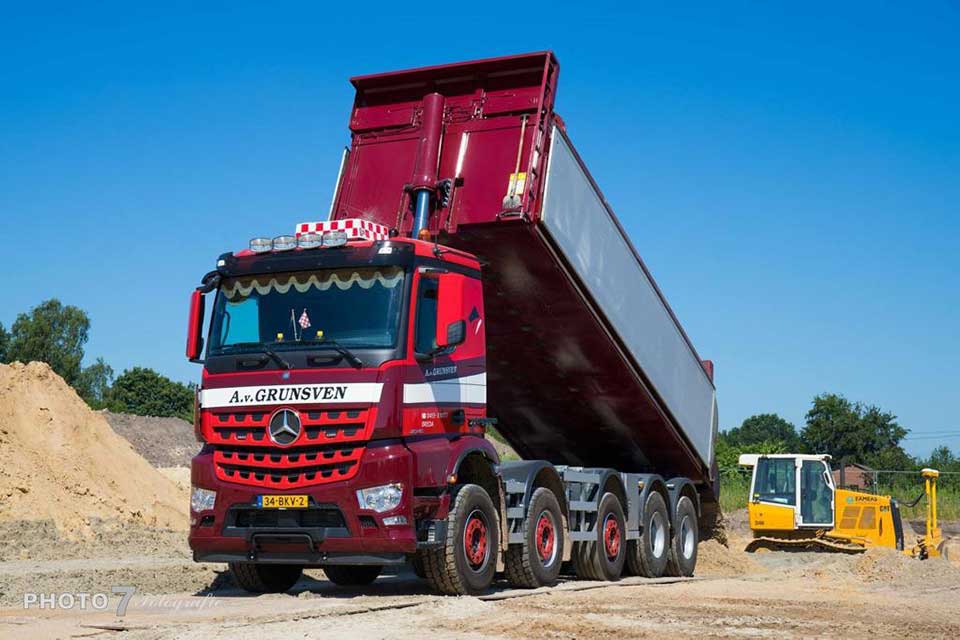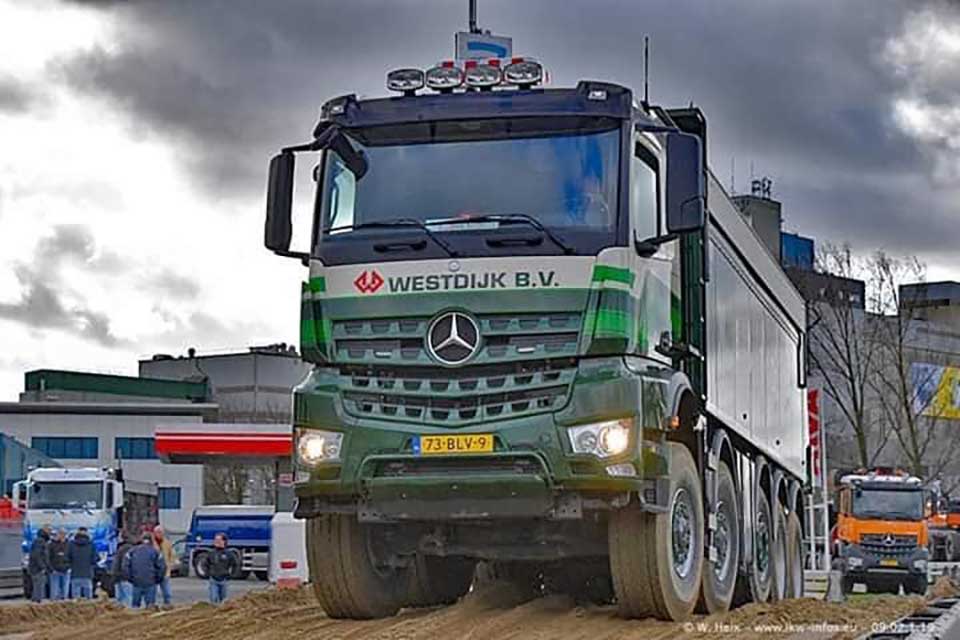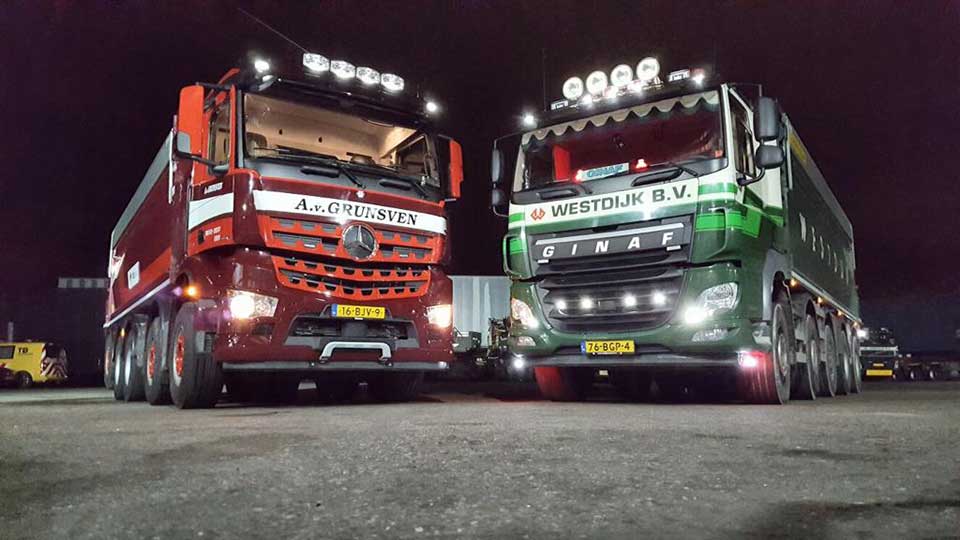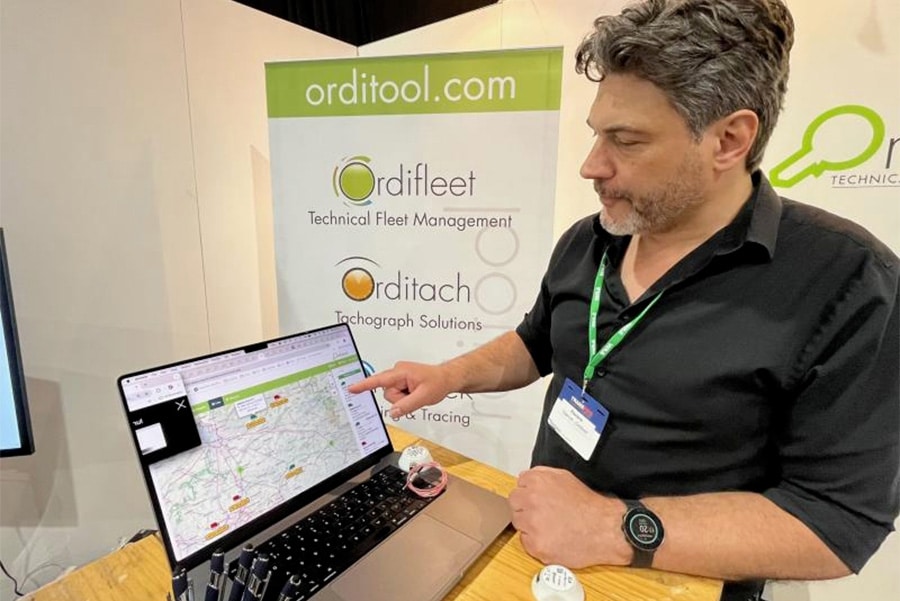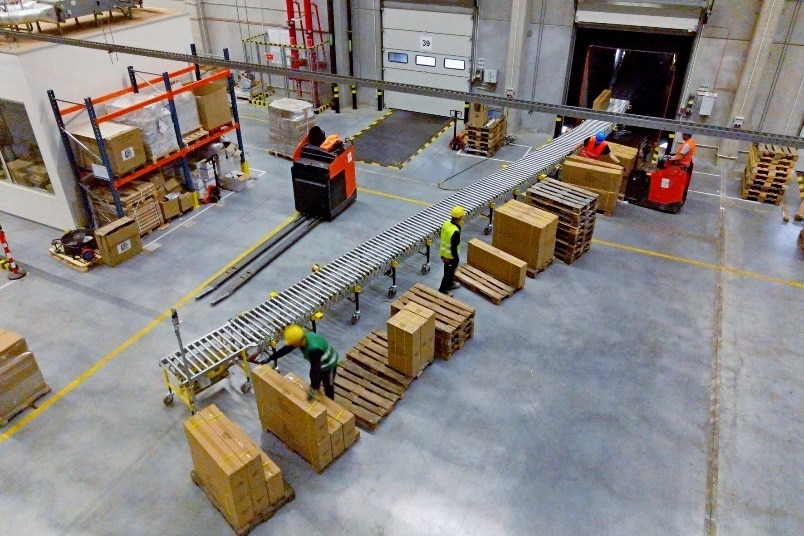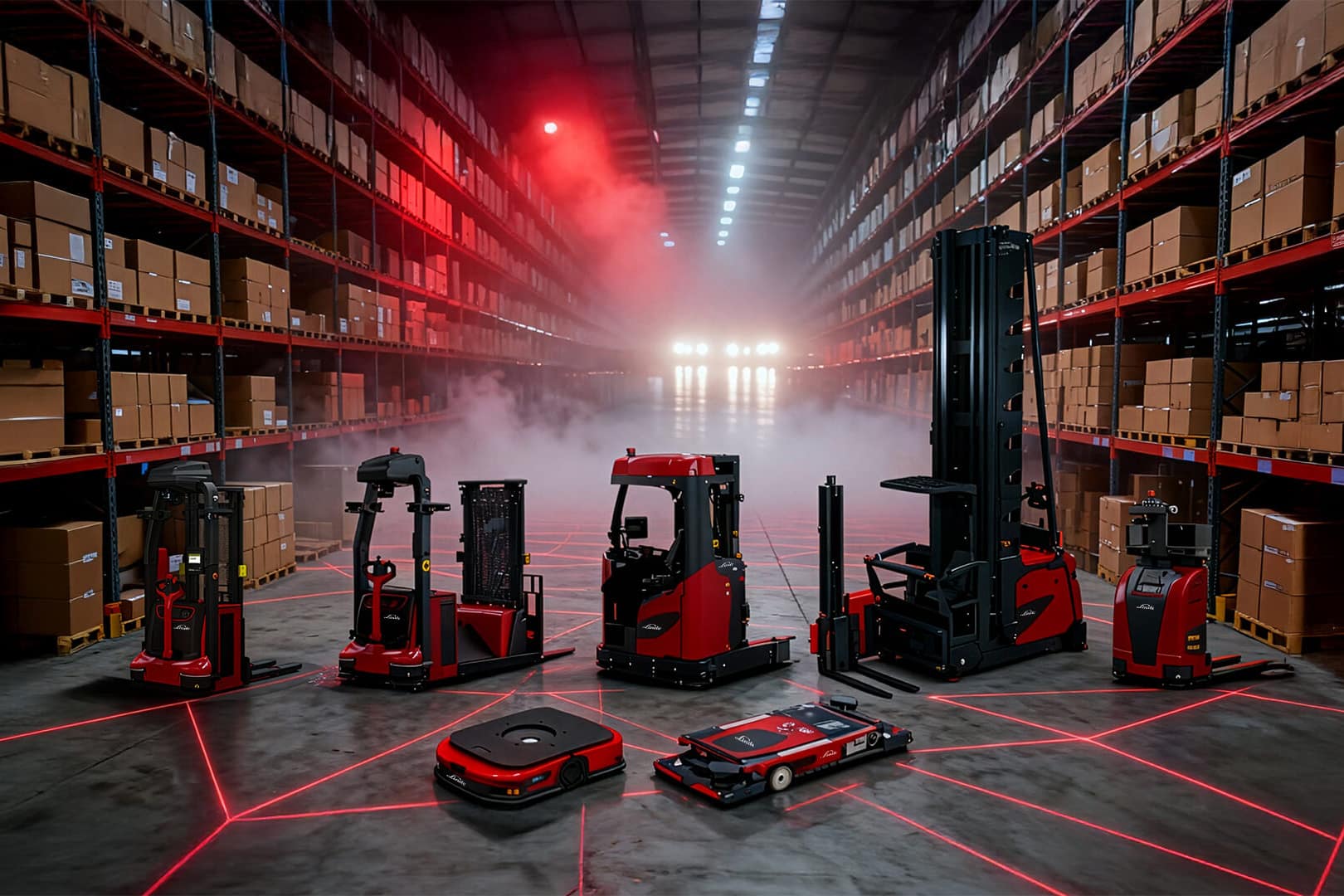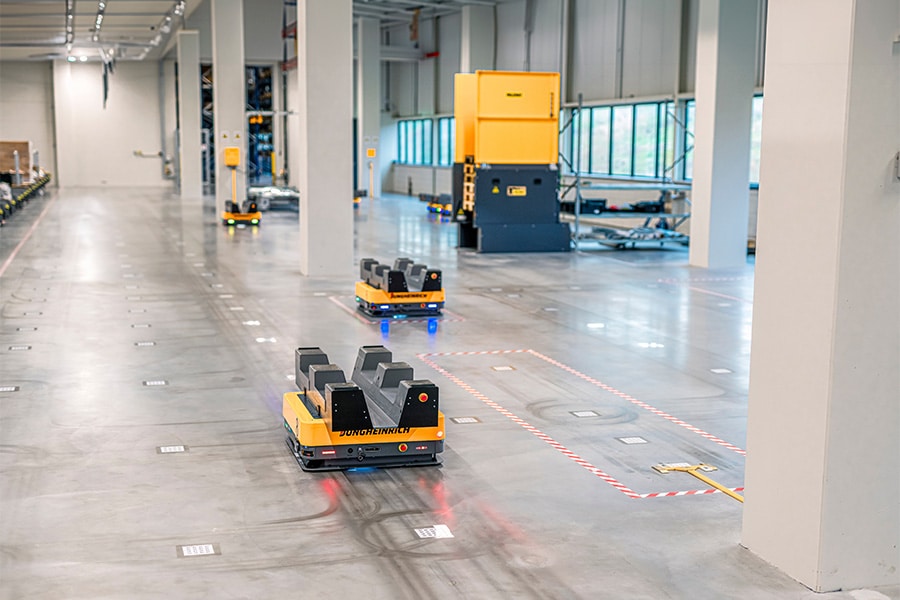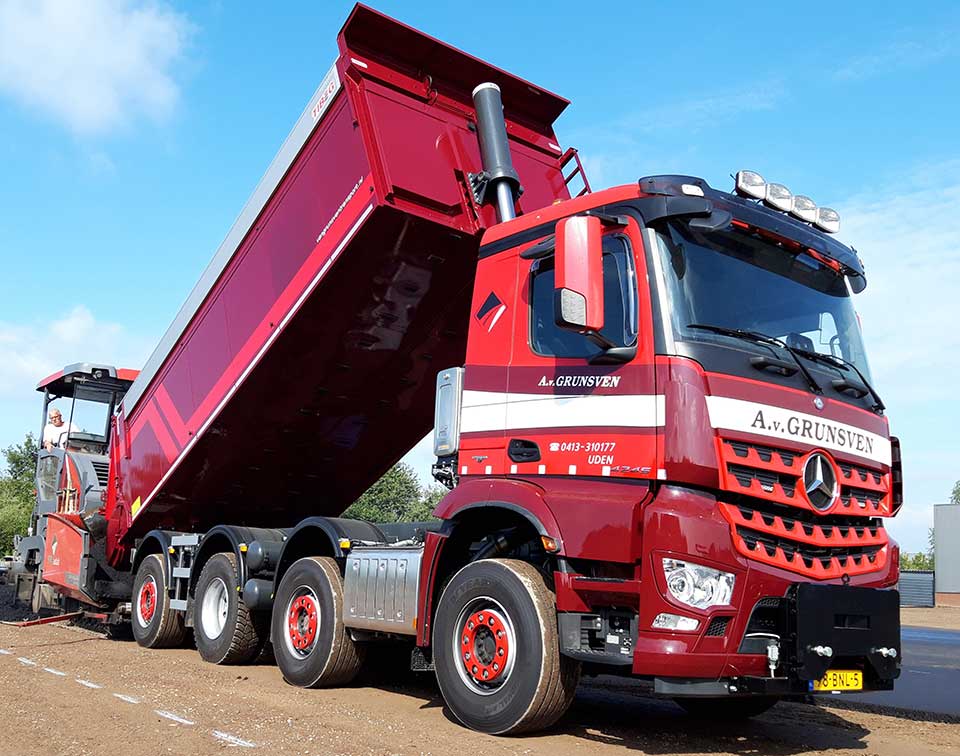
Cleaner fuel limits emissions as early as today
As a link within the construction chain, A. Van Grunsven Transport has been making every effort to reduce CO2 and nitrogen reduction. For example, Van Grunsven developed special insulation for tippers transporting asphalt, and they drive the latest generation of Euro 6 trucks. In addition, in cooperation with fuel supplier Den Hartog, the transport company switched to an advanced, CO2-saving fuel. 'We were looking for something with which we could reduce emissions immediately. Now, today already," says Anton van Grunsven.
Van Grunsven focuses primarily on the transport of loose construction materials, such as sand and gravel. Within this market, A. Van Grunsven Transport in Uden (N.-Br.) and its sister company Westdijk Kippers in Utrecht have over the years specialized extensively in the transport of asphalt for road construction. More than 100 units are active in this field nationwide. This niche market makes specific demands on transport. By coming up with its own technical innovations, Van Grunsven succeeds in constantly responding to the wishes of the market.
A good example is the development of our own tippers that are much better insulated. As a result, the asphalt loses less heat during transport. The asphalt plant, the producer of the asphalt, therefore has to heat the product less in order to guarantee the desired final temperature on delivery to the work site. This lower production temperature saves an enormous amount of energy, and thus CO2-emissions. Van Grunsven developed these tippers itself, underscoring the innovative nature of the company. This branch has even grown into an independent company: Tibeg.
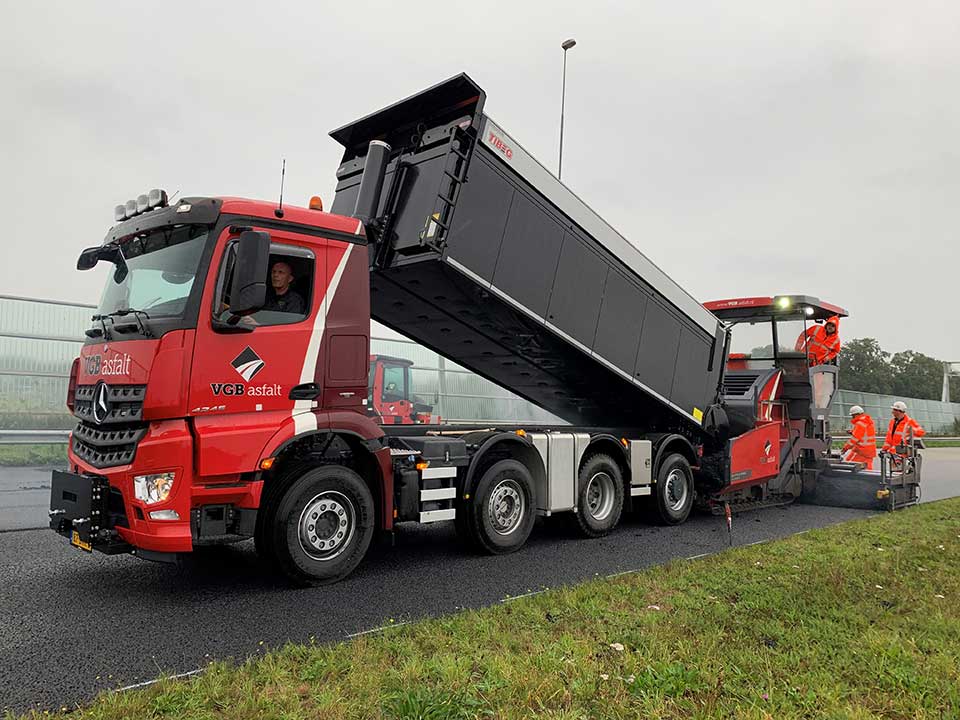
Don't wait, reduce emissions now
For many outsiders this is still an unusual development, but for Van Grunsven working with these tippers is now the standard within the transport company. Just like driving trucks that meet the Euro 6 emission standards in order to achieve low CO2 and nitrogen to be guaranteed. Van Grunsven likes to look ahead. The market, specifically road construction, demands a reduction in CO2 and nitrogen beyond what the current generation of diesel trucks - no matter how clean - can offer. Electric driving is then quickly becoming the answer.
However, deployment of electric trucks with a battery pack still has technical limitations. In distribution work there are possibilities, but for the heavy transport in which Van Grunsven operates, those possibilities are still limited. Not only because of the high weights, but also because 24/7 deployment is not exceptional in the high season. Time to recharge a battery is simply not available then.
Despite all the limitations, Van Grunsven is certainly not abandoning this technology. 'We are already working concretely behind the scenes on electrification for the future. We see that as important,' Anton van Grunsven explains, 'also with a view to the Climate Agreement as it stands. At the same time, we don't want to wait for future developments. That is why a few years ago we started looking for a technique to immediately reduce CO2-emissions from our fleet of vehicles actively.'
Cleaner diesel offers solution
In that existing fleet, the Euro 6 diesel engine is a given. To make this fleet even more sustainable, Van Grunsven chose to replace the diesel used with a cleaner variant. To this end, the transporter entered into a partnership with Den Hartog in Groot Ammers. This fuel supplier and the transport company are traditionally family businesses, as a result of which they work with the same short lines of communication and switch quickly. Van Grunsven: "That's why there is a good click.
Economically sustainable
Working sustainably is quick to say. The reality within the transportation industry is that profit margins are often narrow. Switching completely to an all-vegetable diesel such as HVO means a significant additional cost. Charging a higher rate is difficult, unless the customer is really willing to pay more.
So Van Grunsven was looking for a middle ground: reduce emissions immediately, but in a way that is also economically feasible today. Logically, an investment in the environment simply must also be economically sustainable. Moreover, Van Grunsven deals with a mixed customer base, he explains. 'Some of our customers still attach little value to CO2-reduction, while for others it is important. In consultation with Den Hartog, Van Grunsven chose to switch to advanced FAME biodiesel with all trucks. This replaces on average 10 percent of fossil diesel with renewable biodiesel. This is not made from controversial food crops, but from residual streams such as used vegetable frying fat. That makes the fuel truly sustainable.
For example, a CO2-reduction of up to 27 percent across the entire fleet is possible. In practice, that reduction is slightly lower. After all, Van Grunsven cannot always fill up with this special diesel at its home base in Uden. 'Sometimes we have to fill up at a gas station en route. Unfortunately, we find that this fuel is not yet available everywhere,' explains the entrepreneur.
In order to still correctly record by how many tons the transport company's CO2-emissions on an annual basis, Den Hartog provides certificates with each delivery of the special diesel. This allows Van Grunsven to distinguish itself in the market, and to demonstrate how many tons of CO2 it saves in a year. Anton van Grunsven: 'If a client attaches value to emission reduction on a particular project, we can put our annual savings exactly where they are wanted.'
